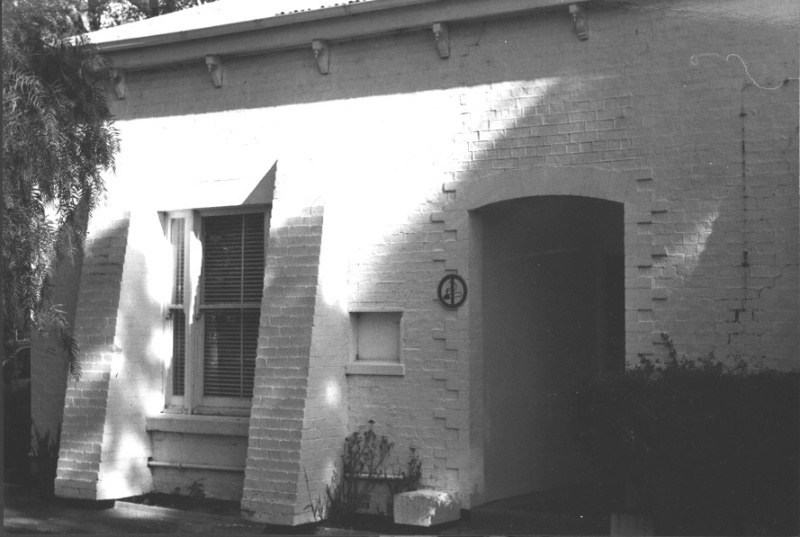ICI Explosives Laboratory
Ballarat Road, DEER PARK VIC 3023 - Property No 7
ICI Residential Precinct
-
Add to tour
You must log in to do that.
-
Share
-
Shortlist place
You must log in to do that.
- Download report


Statement of Significance
This 19th century building is of State significance, since it is one of the main surviving structures associated with Australia's leading explosives factory in the 19th century and the most important, if not the only, commercial manufacturer of explosives in Australia. The initial product, 'Lithofracteur', was extensively used in the mining and quarrying industry. As the manager's residence in its early years (up to the early 1920s), the building has important links with leading personnel in the factory's history. A resident manager was essential in such a dangerous industry. The building took on a new role as 'part of factory offices' in 1926-27, after the construction of a new manager's residence in Ballarat Road, and as a laboratory in later years.
The ICI Residential Heritage Area is of State historical and architectural significance as a rare and distinctive company township and for its association with the nineteenth century origins and twentieth century expansion of the former Nobel (later ICIANZ, now ORICA) factory which became the major private manufacturer of explosives and munitions in Australia.
The estate, initiated by Leathercloth Pty. Ltd., (a subsidiary of Nobel) is one of a number of company sponsored housing schemes in the Brimbank municipality and reflects a pattern of development where nationally important industries established in green-fields sites beyond the urban fringe and so needed to provide accommodation and other facilities for workers. The inclusion of the recreation reserve in the precinct and the adjacent separately listed Deer Park Hall, and Hunt Club Hotel (a former ICI training centre) further demonstrate the company role in local planning and development.
The precinct is significant for its association with the largest explosives, chemicals and plastics manufacturer in Australia, originally established here under the importer Jones Scott and Co in the 19th century, and then becoming the Australian Lithofracteur Company (Krebs Patent), a rival to Nobel's dynamite patent, and in production in Australia only a couple of years after Nobel's Ardeer factory was opened. It later merged with the Nobel company and then became ICIANZ before the most recent change to ORICA.
This important industry played a major role in mining through the development of progressively more efficient and safer explosives. It also contributed to wartime production in ammunition, initiators and in World War Two, the development of synthetic ammonia production and construction of the Defence Explosives Annexe No 5 (later the Albion Explosives Factory). The Leathercloth plant was influential in the development of synthetic materials for the motor industry including vinyl seat fabrics and hoods, and has continued to play an important role in synthetic fabrics.
The houses in Station Road, Ballarat Road, Hume Street and Hyde Street reflect a sequence of development in their distinctive styles and forms, reflecting the colonial origins of the company in their Indian Bungalow forms as well as giving insight to the social and economic status of their proposed occupants with the larger and more elaborate houses intended for factory managers. The inclusion of concrete houses in the estate also points to the innovation in building in the later period, possibly as a response to war-time material shortages.
The recreation reserve and contemporary (but altered) pavilion are significant in demonstrating the role of the company in providing community services to their workers, and as evidence of the urban design and landscape approaches to company housing in the period.
-
-
ICI Explosives Laboratory - Physical Description 1
The former office, laboratory and residence is situated on the south bank of Kororoit Creek, within Portion 6, Section 22, Parish of Derrimut, near the original main entrance, now Gate 2. The construction is of hand-made brick and bluestone. It incorporates segmental arched openings for the doorways and some original joinery such as double hung sash windows, panel doors and eave brackets. Diaper brickwork is evident in relief around the doors and possible in polychrome effects, although this is painted over. The building ahs been modified internally.
ICI Explosives Laboratory - Physical Conditions
The laboratory building is extensively altered but retains the basic form of the nineteenth century building, with some original windows, eave brackets and wall finishes. This is the oldest surviving residence built by the Deer Park factory for its staff and employees. There were several cottages built in the 1870s for employees within the factory complex, but these were later dismantled or demolished.
ICI Explosives Laboratory - Historical Australian Themes
3 Developing local, regional and national economies
3.13 Developing an Australian manufacturing capacityHeritage Study and Grading
Brimbank - Brimbank City Council Post-contact Cultural Heritage Study
Author: G. Vines
Year: 2000
Grading: StateBrimbank - Melbourne Western Region Industrial Heritage Study
Author: G. Vines & A. Ward
Year: 1989
Grading:
-
-
-
-
-
BLACK POWDER MILL
 Victorian Heritage Register H2029
Victorian Heritage Register H2029 -
ICI Housing Estate Precinct
 Brimbank City
Brimbank City -
ICI Residential Precinct
 Brimbank City
Brimbank City
-
177 Fenwick Street
 Yarra City
Yarra City -
19 Cambridge Street
 Yarra City
Yarra City -
2 Derby Street
 Yarra City
Yarra City
-
-












